
 Metals Australia (MLS:AU) has announced Titanium-Vanadium-Magnetite Discovery Extended over 1km
Metals Australia (MLS:AU) has announced Titanium-Vanadium-Magnetite Discovery Extended over 1km
Download the PDF here.

 Metals Australia (MLS:AU) has announced Titanium-Vanadium-Magnetite Discovery Extended over 1km
Metals Australia (MLS:AU) has announced Titanium-Vanadium-Magnetite Discovery Extended over 1km
Download the PDF here.


Forge Resources Corp. (CSE: FRG) (OTCQB: FRGGF) (FSE: 5YZ) (‘FRG’ or the ‘Company’), is pleased to announce full gold assay results from drill hole ALT-25-012 at the Payoff Zone intersecting 3.4 g/t gold over 44.75 metres from 256.23 metres and discovery results from hole ALT-25-013 at the Alimony Zone grading at 1.04 g/t gold over 55.52 metres from 91.99 metres, at its Alotta Project in Yukon (Figure 1).
Highlights:
PJ Murphy, CEO of Forge Resources, states: ‘We are continually impressed by results from the Payoff Zone, which is successfully developing in size and grade with every drill hole. Additionally, we are thrilled to announce the discovery drill results from the Alimony Zone that demonstrates the large-scale fertility of the mineralizing system at Alotta. We are eagerly awaiting the remaining 2025 drill results, from the Commission Zone, which will provide critical data for helping guide future exploration. We are looking forward to the 2026 field season to continue exploring the potential on the property and further advancing our exciting pipeline of targets on the property.’

Figure 1. Overview Map of Diamond Drill Holes.
To view an enhanced version of this graphic, please visit:
https://images.newsfilecorp.com/files/8680/278191_00f0013144f59af0_001full.jpg
Diamond Drilling:
A total of 1262.75 m of drilling in 4 drill holes were completed by the Company during the Phase 2 drill program in 2025. Drill hole location data for results reported in this news release are listed in Table 1.
Table 1: Diamond Drill Hole Data
| Hole ID | Easting (m) | Northing (m) | Elevation (m) | Azimuth | Dip | Length (m) |
| ALT-25-012 | 623260 | 6915966 | 1078 | 135 | -60 | 339.75 |
| ALT-25-013 | 623019 | 6916490 | 1031 | 235 | -50 | 312 |
Assay highlights of diamond drill holes pertaining to this News Release are found in Table 2 and 3.
Table 2: Payoff Zone Highlight Assay Results
| Payoff Zone | ||||||
| ALT-25-012 | This News Release | |||||
| From (m) |
To (m) |
Interval (m)* |
Au (g/t) |
Ag (g/t) |
Cu (%) |
|
| 54.45 | 65.31 | 10.86 | 0.35 | 0.54 | 0.02 | |
| 176.00 | 185.00 | 9.00 | 0.41 | 0.25 | 0.01 | |
| 223.00 | 301.00 | 76.93 | 2.03 | 1.43 | 0.02 | |
| including | 256.23 | 301.00 | 44.75 | 3.40 | 2.22 | 0.024 |
| including | 284.93 | 293.10 | 8.16 | 17.71 | 9.31 | 0.07 |
| including | 286.00 | 289.15 | 3.15 | 45.01 | 17.31 | 0.13 |
| including | 286.00 | 287.15 | 1.15 | 8.85 | 24.50 | 0.08 |
| including | 287.15 | 288.40 | 1.25 | 105 | 20.80 | 0.24 |
| 327.94 | 339.00 | 11.06 | 0.34 | 0.59 | 0.02 |
*All intervals are drilled core lengths. Additional drilling is required to establish true widths.
Table 3: Alimony Zone Highlight Assay Results
| Alimony Zone | ||||||
| ALT-25-013 | This News Release | |||||
| From (m) |
To (m) |
Interval (m)* |
Au (g/t) |
Ag (g/t) |
Cu (%) |
|
| 35.29 | 147.52 | 112.21 | 0.66 | 0.61 | 0.01 | |
| including | 74.20 | 147.52 | 73.31 | 0.82 | 0.56 | 0.01 |
| including | 91.99 | 147.52 | 55.52 | 1.04 | 0.6 | 0.01 |
| including | 109.56 | 145.60 | 36.04 | 1.41 | 0.55 | 0.01 |
| including | 144 | 145.6 | 1.6 | 25.8 | 3.14 | 0.01 |
| 282.49 | 311.14 | 28.65 | 0.254 | 0.84 | 0.01 |
*All intervals are drilled core lengths. Additional drilling is required to establish true widths.
Payoff Zone
Hole ALT-25-012 drilled through granodiorite and porphyritic rocks and intersected widespread, near-surface alteration, veining, and sulphide mineralization. Alteration includes pervasive secondary biotite that is overprinted by intense silicification, and widespread chlorite and sericite alteration, which are more intense around areas of concentrated veining (Photo 1). Quartz vein-hosted pyrite, molybdenite, chalcopyrite, and pyrrhotite were commonly observed in quartz veins, with the strongest concentrations of veining and mineralization found in the top and bottom 100 metres of the drill hole (Photo 2).

Photo 1. Quartz-pyrite veins with strong chlorite-sericite alteration halos (Alt-25-012, 186 m depth).
To view an enhanced version of this graphic, please visit:
https://images.newsfilecorp.com/files/8680/278191_forgeimg2.jpg

Photo 2. Quartz vein with centreline of pyrite (right) in porphyritic rocks hosting disseminated pyrite and pyrrhotite (ALT-25-012, 55 m depth)
To view an enhanced version of this graphic, please visit:
https://images.newsfilecorp.com/files/8680/278191_00f0013144f59af0_003full.jpg
At 287.32 m down hole, below the most intense widespread alteration and mineralization, drilling intersected a low angle (10-30° to core axis) irregular quartz vein, approximately 10 cm wide, hosting visible gold and bismuthinite, along with disseminated to semi-massive pyrrhotite, pyrite, chalcopyrite, arsenopyrite, molybdenite, and sphalerite (Photos 3 and 4). Core sampling of the quartz vein and surround rock returned 1.25 m grading 105 g/t Au. Immediately preceding this sample, a second cm-scale quartz vein hosting visible gold in altered and veined granodiorite returned 1.15 m grading 8.85 g/t Au. In the footwall of the coarse gold-bearing veins, narrow sulphide stringers developed within granodiorite returned 0.47 g/t Au over a core length of 0.75 m.

Photo 3. ~10 cm wide irregular quartz vein cutting granodiorite hosting coarse native gold, bismuthinite, pyrrhotite, pyrite, chalcopyrite, arsenopyrite, molybdenite and sphalerite (ALT-25-012).
To view an enhanced version of this graphic, please visit:
https://images.newsfilecorp.com/files/8680/278191_00f0013144f59af0_004full.jpg

Photo 4. Photos of coarse visible gold and bismuthinite from a ~10 cm wide vein in drill hole ALT-25-012 (Photo 3 – 287.32 – 288.24 m).
To view an enhanced version of this graphic, please visit:
https://images.newsfilecorp.com/files/8680/278191_00f0013144f59af0_005full.jpg
Alimony Zone
Hole ALT-25-013, collared 800 m northwest of the Payoff Zone and 575 m northwest of drill hole ALT-25-012, was the first hole drilled into the Alimony Zone, a target defined by a tightly constrained 400 by 600 metre molybdenum-gold soil anomaly.
The hole drilled entirely through granodiorite, and intersected widespread, discrete, quartz and carbonate veins with associated sulphide mineralization throughout the top of the hole, and narrow polymetallic quartz veins. Overall, alteration and veining in this hole is less abundant than observed at the Payoff Zone; however, broad intervals of gold mineralization were intersected in the upper 150 m of the drill hole associated with discrete quartz veining, in addition to higher-grade polymetallic quartz veins (Photo 5 and 6).

Photo 5. Banded quartz vein with disseminated and banded sulphides (Alt-25-013, 36 m depth – 8.2 g/t Au over 0.83 m, from 35.29 m depth).
To view an enhanced version of this graphic, please visit:
https://images.newsfilecorp.com/files/8680/278191_forgeimg6jpg

Photo 6. Banded polymetallic pyrite-pyrrhotite-chalcopyrite vein (Alt-25-013, 170 m depth – 4.59 g/t Au over 0.37 m, from 170.42 m depth).
To view an enhanced version of this graphic, please visit:
https://images.newsfilecorp.com/files/8680/278191_forgepct6.jpg

Figure 2. Cross Section of drill hole ALT-25-013.
To view an enhanced version of this graphic, please visit:
https://images.newsfilecorp.com/files/8680/278191_00f0013144f59af0_008full.jpg
Quality Assurance/Quality Control
Analytical work was completed by ALS Canada Ltd., with sample delivery in Whitehorse, Yukon, sample preparation in Langley, British Columbia, and geochemical analysis in North Vancouver, British Columbia.
Rigorous procedures are in place regarding sample collection and data entry. Certified assay standards, coarse reject duplicates, field duplicates and blanks were routinely inserted into the sample stream to ensure integrity of the assay process. All of the results reported have passed the QA/QC screening. Core was sampled using a diamond core saw, with half of each interval sent to the lab for analysis and the other half retained.
Half-core samples were fine-crushed and a 250 g split was pulverized to better than 85% passing 75 microns. Gold was determined for core samples using a 50 g charge by fire assay followed by an atomic absorption spectroscopy finish (Au-AA24). The fine fraction was analyzed for 48 elements using a four acid digestion followed by inductively coupled plasma combined with mass spectroscopy and atomic emission spectroscopy finish (ME-MS61)
Fire assay screen analysis was completed using a 1 kg sample size screened to -106 microns. Oversize material was analyzed in entirety by fire assay with gravimetric finish. A 30 g assay of the undersized material was analyzed in duplicate by fire assay with atomic absorption spectroscopy finish. Results of the oversize and undersize assays were combined to provide the final reported number in this release.
Proximity to Measured and Indicated Resources
The Alotta property consists of 230 mineral claims that covers approximately 4,723 hectares in a similar geological setting to Western Copper and Gold’s Casino deposit, that is located 50 km to the north of the Alotta Project. The Casino deposit is one of the largest undeveloped copper-gold porphyry projects in the world.
About Forge Resources Corp.
Forge Resources Corp. is a Canadian-listed junior exploration company focused on exploring and advancing the Alotta project, a prospective porphyry copper-gold-molybdenum project consisting of 230 mineral claims that cover 4,723 hectares, located 50 km south-east of the Casino porphyry deposit in the unglaciated portion of the Dawson Range porphyry/epithermal belt in the Yukon Territory of Canada.
In addition, the Company holds an 80% interest in Aion Mining Corp., a company that is developing the fully permitted La Estrella coal project in Santander, Colombia. The project contains eight known seams of metallurgical and thermal coal.
Qualified Person
Lorne Warner, President and P. Geo, is a qualified person as defined by National Instrument 43-101 and has reviewed and approved the scientific and technical disclosure in this news release.
On behalf of the Board of Directors
‘PJ Murphy’, CEO Forge Resources Corp.
info@forgeresources.com
Forward-Looking Statements
Certain of the statements made and information contained herein may contain forward-looking information within the meaning of applicable Canadian securities laws. Forward-looking information includes, but is not limited to, information concerning the Company’s intentions with respect to the development of its mineral properties. Forward-looking information is based on the views, opinions, intentions and estimates of management at the date the information is made, and is based on a number of assumptions and subject to a variety of risks and uncertainties and other factors that could cause actual events or results to differ materially from those anticipated or projected in the forward-looking information (including the actions of other parties who have agreed to do certain things and the approval of certain regulatory bodies). Many of these assumptions are based on factors and events that are not within the control of the Company and there is no assurance they will prove to be correct. There can be no assurance that forward-looking information will prove to be accurate, as actual results and future events could differ materially from those anticipated in such information. The Company undertakes no obligation to update forward-looking information if circumstances or management’s estimates or opinions should change except as required by applicable securities laws, or to comment on analyses, expectations or statements made by third parties in respect of the Company, its financial or operating results or its securities. The reader is cautioned not to place undue reliance on forward-looking information. We seek safe harbor.
Source
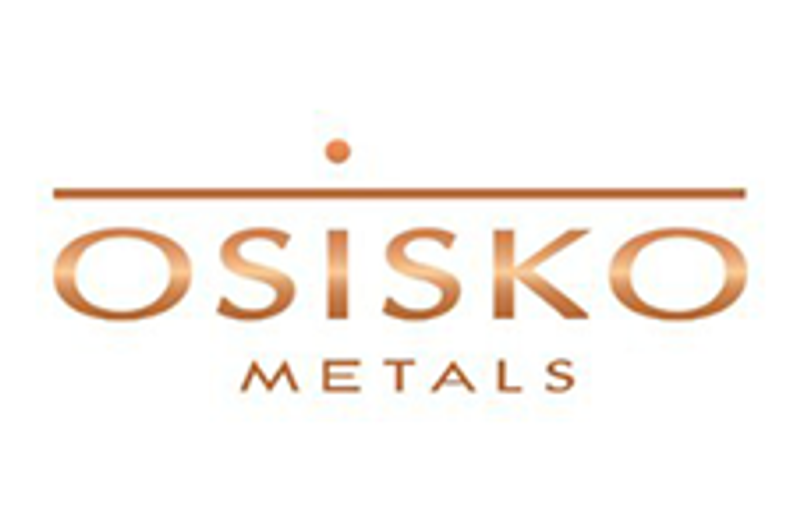
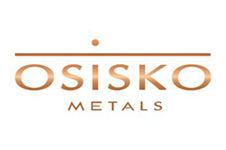
NOT FOR DISTRIBUTION TO UNITED STATES NEWS WIRE SERVICES OR FOR DISSEMINATION IN THE UNITED STATES
Osisko Metals Incorporated (the ‘ Company ‘ or ‘ Osisko Metals ‘) (TSX: OM,OTC:OMZNF; OTCQX: OMZNF; FRANKFURT: OB51) is pleased to announce that it has completed its previously announced non-brokered private placement with four strategic investors, pursuant to which the Company issued an aggregate of 67,666,666 common shares of the Company (the ‘ Common Shares ‘) at an offering price of $0.48 per Common Share for aggregate gross proceeds to the Company of approximately $32,480,000 (the ‘ Private Placement ‘).
The Private Placement included subscriptions from the following strategic investors:
After giving effect to the Private Placement: (i) Hudbay Minerals Inc. (‘ Hudbay ‘) beneficially owns or controls 29,166,666 Common Shares, representing approximately 4.3% of the issued and outstanding Common Shares, calculated on a non-diluted basis; and (ii) Agnico Eagle Mines Limited (‘ Agnico ‘) beneficially owns or controls 67,210,000 Common Shares and 20,605,000 Common Share purchase warrants, representing an ownership interest in the Company equal to approximately 9.85% on a non-diluted basis and 12.49% on a partially-diluted basis.
Concurrently with the closing of the Private Placement, the Company and Hudbay entered into an investor rights agreement, pursuant to which Hudbay was granted certain rights, including top-up rights and the right to participate in future offerings of securities of the Company upon Hudbay’s ownership interest increasing to 9.9% and, subject to certain minimum ownership thresholds and other conditions, the right to board representation. In addition, the Company and Agnico also amended and restated the terms of their existing investor rights agreement dated December 11, 2024, to, among other things, permit Agnico to increase its ownership interest in the Company to approximately 12.49%.
The net proceeds of the Private Placement are expected to be used to advance the Company’s Gaspé Copper project (including drilling, permitting and technical studies) and for general corporate purposes.
The Private Placement remains subject to the final approval of the Toronto Stock Exchange (the ‘ TSX ‘). All Common Shares issued under the Private Placement are subject to a statutory hold period expiring four months and one day from the date of issuance.
This news release does not constitute an offer to sell or a solicitation of an offer to buy any of the securities in the United States. The securities have not been and will not be registered under the U.S. Securities Act, or any state securities laws and may not be offered or sold within the United States or to or for the account or benefit of a U.S. person (as defined in Regulation S under the U.S. Securities Act) unless registered under the U.S. Securities Act and applicable state securities laws or an exemption from such registration is available.
About Osisko Metals
Osisko Metals Incorporated is a Canadian exploration and development company creating value in the critical metals sector, with a focus on copper and zinc. The Company acquired a 100% interest in its flagship project, the past-producing Gaspé Copper mine, from Glencore Canada Corporation in July 2023. The Gaspé Copper project is located near Murdochville in Québec’s Gaspé Peninsula. The Company is currently focused on resource expansion of the Gaspé Copper system, with current Indicated Mineral Resources of 824 Mt grading 0.34% CuEq and Inferred Mineral Resources of 670 Mt grading 0.38% CuEq (in compliance with NI 43-101). For more information, see Osisko Metals’ November 14, 2024 news release entitled ‘ Osisko Metals Announces Significant Increase in Mineral Resource at Gaspé Copper ‘. Gaspé Copper hosts the largest undeveloped copper resource in eastern North America, strategically located near existing infrastructure in the mining-friendly province of Québec.
In addition to the Gaspé Copper project, the Company is working with Appian Capital Advisory LLP, through the Pine Point Mining Limited joint venture, to advance one of Canada’s largest past-producing zinc mining camps, the Pine Point project, located in the Northwest Territories. The current mineral resource estimate for the Pine Point project consists of Indicated Mineral Resources of 49.5 Mt at 5.52% ZnEq and Inferred Mineral Resources of 8.3 Mt at 5.64% ZnEq (in compliance with NI 43-101). For more information, see Osisko Metals’ June 25, 2024 news release entitled ‘Osisko Metals releases Pine Point mineral resource estimate: 49.5 million tonnes of indicated resources at 5.52% ZnEq’ . The Pine Point project is located on the south shore of Great Slave Lake, Northwest Territories, close to infrastructure, with paved road access, an electrical substation and 100 kilometers of viable haul roads.
For further information on this news release, visit www.osiskometals.com or contact:
Don Njegovan, President
Email: info@osiskometals.com
Phone:(416) 500-4129
Cautionary Statement on Forward-Looking Information
This news release contains ‘forward-looking information’ within the meaning of applicable Canadian securities legislation based on expectations, estimates and projections as at the date of this news release. Any statement that involves predictions, expectations, interpretations, beliefs, plans projections, objectives, assumptions, future events or performance (often, but not always, using phrases such as ‘expects’ or ‘does not expect’, ‘is expected’, ‘interpreted’, ‘management’s view’, ‘anticipates’ or ‘does not anticipate’, ‘plans’, ‘budget’, ‘scheduled’, ‘forecasts’, ‘estimates’, ‘potential’, ‘feasibility’, ‘believes’ or ‘intends’ or variations of such words and phrases or stating that certain actions, events or results ‘may’ or ‘could’, ‘would’, ‘might’ or ‘will’ be taken, occur or be achieved) are not statements of historical fact and may be forward-looking information and are intended to identify forward-looking information. This news release contains forward-looking information pertaining to, among other things: the ability for the Company to obtain the final approval of the TSX; the anticipated use of proceeds of the Private Placement; the ability for the Company to unlock the full potential of its assets and achieve success; the ability for the Company to create value for its shareholders; the advancement of the Pine Point project; the anticipated resource expansion of the Gaspé Copper system; and Gaspé Copper hosting the largest undeveloped copper resource in eastern North America.
Forward-looking information is not a guarantee of future performance and is based upon a number of estimates and assumptions of management, in light of management’s experience and perception of trends, current conditions and expected developments, as well as other factors that management believes to be relevant and reasonable in the circumstances, including, without limitation, assumptions about: the ability of exploration results, including drilling, to accurately predict mineralization; errors in geological modelling; insufficient data; equity and debt capital markets; future spot prices of copper and zinc; the timing and results of exploration and drilling programs; the accuracy of mineral resource estimates; production costs; political and regulatory stability; the receipt of governmental and third party approvals; licenses and permits being received on favourable terms; sustained labour stability; stability in financial and capital markets; and availability of mining equipment and positive relations with local communities and groups. Forward- looking information involves risks, uncertainties and other factors that could cause actual events, results, performance, prospects and opportunities to differ materially from those expressed or implied by such forward-looking information. Factors that could cause actual results to differ materially from such forward-looking information are set out in the Company’s public disclosure record on SEDAR+ ( www.sedarplus.ca ) under Osisko Metals’ issuer profile. Although the Company believes that the assumptions and factors used in preparing the forward-looking information in this news release are reasonable, undue reliance should not be placed on such information, which only applies as of the date of this news release, and no assurance can be given that such events will occur in the disclosed time frames or at all. The Company disclaims any intention or obligation to update or revise any forward-looking information, whether as a result of new information, future events or otherwise, other than as required by law.


News Provided by GlobeNewswire via QuoteMedia


As the end of 2025 nears, investors may want to consider how they can use tax-loss selling to their benefit.
Buying stocks low and selling them high is ideal, but sometimes investments go sour. In such cases, all hope is not lost — at the end of the year, investors can sell investments that provided losses instead of capital gains.
The money made from selling off losses can then be used to offset capital gains liabilities incurred for the year. This is the principle behind tax-loss selling, also known as tax-loss harvesting.
This valuable strategy offers investors another opportunity to lower their tax bill for 2025. So let’s take a look at how tax-loss selling works, plus the final tax-loss selling dates for investors in Canada, the US and Australia.
Tax-loss selling is the process of selling stocks at a loss to reduce the capital gains earned on an investment. Since capital losses are tax deductible, they can be used to offset capital gains and reduce tax liability on an investor’s tax return.
Tax-loss selling generally involves investments that have seen significant losses, and because of this, these sales generally focus on a relatively small number of securities within the public markets.
In cases where many investors are executing a sell order in tandem, the price of the securities will fall. In addition, the fact that tax-loss selling often occurs in November and December means the most attractive securities for tax-loss selling at that time are investments that could generate strong capital gains early in the next year, as once selling season has ended, shares that have become largely oversold can bounce back.
Some investors may consider selling an asset at a loss, deducting that loss for a tax gain and then purchasing the same stock again in an effort to evade taxes. This is known as a wash sale, and is prohibited by the Internal Revenue Service (IRS); if the IRS deems a transaction to be a wash, the investor would not be allowed any tax benefits.
To avoid this situation, investors must wait 30 days to repurchase shares that were originally sold for a loss. Additionally, shares sold for a loss must have been in the investor’s possession for over 30 days.
As a result, a potentially beneficial strategy would be to buy during the selling season and sell after the tax loss has been established. This approach could be used on either long-term capital gains or short-term capital gains.
Tax-loss selling comes with many potential benefits, but it nevertheless has some strings attached.
The key thing for investors to remember is that it has deadlines. For investors filing their taxes in Canada, the last day for tax-loss selling in 2025 is December 30. Transactions for stocks purchased or sold after this date will be settled in 2025, so any capital gains or losses will apply to the 2025 tax year.
The timing for the tax-loss selling deadline for Canadians was altered in May 2024, when Canada switched to a T+1 settlement cycle (one business day following the trade date) from a T+2 one.
The system differs for investors who are filing their taxes in the US. Based on information provided by the IRS, the last day for tax-loss selling in the United States this year is December 31.
For Australian investors, the final date for tax-loss selling is June 30, 2026, which is the final day of the 2025/2026 financial year.
Investors should always consult with an expert or review relevant tax documents directly for complete answers. The information contained in this article should not be considered tax advice.
As tax-loss selling starts, opportunities can open up for those who have spent the year on the sidelines.
In her piece “How Bout Tax Loss Buying?,” Gwen Preston of Resource Maven explains that Canaccord Genuity Group (TSX:CF,OTC Pink:CCORF) has found that from mid-November to mid-December, S&P/TSX Composite Index (INDEXTSI:OSPTX) stocks that are down more than 15 percent year-to-date underperform the index by nearly 4 percent. However, from mid-December to mid-January, those same stocks outperform the index by 3.6 percent.
“That outperformance is on top of gains the TSX reliably generates over that time frame,” Preston explains. “So instead of only seeing tax-loss selling as a time to generate tax credits by dumping dogs, let’s look at the opportunity to profit.”
Watch Gwen Preston of Resource Maven discuss tax-loss selling.
Regardless of whether you’re engaging in tax-loss selling or buying, Steve DiGregorio, portfolio manager at Canoe Financial, recommends acting swiftly and aggressively as “liquidity will dry up.”
He sees the second and third week of December as the ideal window, which is well ahead of the “Santa Claus rally” — the period around the last week of December when stocks tend to rise ahead of a healthier market in January.
For now, the year isn’t over yet, so whether you’re tax-loss selling or buying, there’s still time to talk to your accountant or financial advisor to determine which approach is best for you.
Securities Disclosure: I, Lauren Kelly, hold no direct investment interest in any company mentioned in this article.

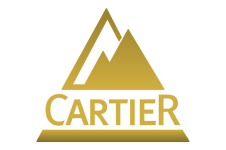
Cartier Resources Inc. (TSX-V: ECR) (the ‘ Company ‘) announces that the Board of Directors granted, on December 16, 2025, a total of 3,600,000 stock options to directors and officers and to one employee of the Company. Pursuant to the terms of the Company’s stock option plan, each option entitles the holder thereof to purchase one common share of the Company at a price of $0.225 per share until no later than December 15, 2030.
Contact:
Philippe Cloutier, PGeo
President and CEO
Cartier Resources Inc.
Telephone: (819) 874-1331
Toll free: 877 874-1331
Fax: (819) 874-3113
philippe.cloutier@ressourcescartier.com
www.ressourcescartier.com
Neither TSX Venture Exchange nor its Regulation Services Provider (as that term is defined in policies of the TSX Venture Exchange) accepts responsibility for the adequacy or accuracy of this release.

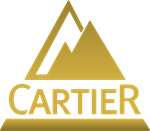
News Provided by GlobeNewswire via QuoteMedia


Canada has approved the merger of Teck Resources (TSX:TECK.A,TECK.B,NYSE:TECK) and Anglo American (LSE:AAL,OTC:NGLOY), clearing a major regulatory hurdle for the creation of a new global mining heavyweight worth over US$53 billion.
Teck and Anglo American said they received approval under the Investment Canada Act, allowing the companies to proceed with their planned “merger of equals,” first announced in September.
The transaction will combine the two miners into a new entity, Anglo Teck, which will be headquartered in Vancouver and positioned as a major global supplier of copper and other critical minerals.
Industry Minister Mélanie Joly said she determined the transaction would deliver a net benefit to Canada, adding that the deal represents “an unequivocal endorsement of the federal government’s efforts to build the strongest economy in the G7.”
She further added that Anglo Teck, with its headquarters in Vancouver, “will be a truly Canadian champion on the world stage.”
Both companies emphasized that the approval formalizes a wide-ranging set of binding commitments negotiated with Ottawa, aimed at securing investment, jobs, and governance influence in Canada over the long term.
Under those undertakings, Anglo Teck will spend at least C$4.5 billion in Canada over the first five years following completion, supporting key projects such as the life extension of the Highland Valley Copper mine, upgrades to critical minerals processing at Teck’s Trail operations, and advancement of the Galore Creek and Schaft Creek copper projects in northwestern B.C.
Furthermore, Anglo Teck’s global headquarters will be based in Canada, with a significant majority of senior management, including the chief executive, deputy chief executive, and chief financial officer, residing primarily in the country. A substantial proportion of the board will also be Canadian.
The combined company will retain a listing on the Toronto Stock Exchange, alongside a primary listing in London and secondary listings in Johannesburg and New York.
Beyond governance, the commitments include maintaining employment levels across Teck’s Canadian operations, expanding youth employment and training opportunities, and ensuring Canadian and Indigenous suppliers have fair access to contracts across Anglo Teck’s global operations.
The company has also committed to honouring all existing agreements with Indigenous governments, communities, and labour unions while maintaining and advancing environmental and social standards in Canada.
Anglo Teck has further pledged to invest in exploration and innovation, which includes at least C$300 million in Canadian critical mineral exploration and the establishment of a Global Institute for Critical Minerals Research and Innovation involving institutions in Canada, South Africa, and the UK.
Over a 15-year period, total spending in Canada is expected to reach at least C$10 billion.
Jonathan Price, Teck’s president and chief executive, said in a recent press release that the merger will create “a business of significant scale and capability that will deliver billions in investment and drive new economic activity and job creation here in Canada and beyond.”
The deal has also drawn strong political support in BC, where several of the company’s key assets are located.
In a social media post, Premier David Eby said the merger was “great news,” calling Anglo Teck “the largest company in our province’s history.” He said the combined company would “help unlock prosperity in the Northwest and deliver good jobs and benefits across the province.”
The merger was approved by shareholders of both companies at meetings held on December 9.
Securities Disclosure: I, Giann Liguid, hold no direct investment interest in any company mentioned in this article.


Homerun Resources Inc. (TSXV: HMR,OTC:HMRFF) (OTCQB: HMRFF) (‘Homerun’ or the ‘Company’) is pleased to announce that road improvement works benefiting the Company’s planned silica processing and solar glass industrial hub in Santa Maria Eterna, in the Municipality of Belmonte, State of Bahia, Brazil, are firmly underway.
The Santa Maria Eterna road project, connecting BA-274 and BA-982 and providing direct access to BR-101, the principal federal highway in the region, is being funded primarily by the Federal Government of Brazil through the Ministry of Transport, via the Union budget, with the State of Bahia acting as the executing entity. Recent field photographs provided to the Company show grading, compaction, material placement and water-truck operations along the Santa Maria Eterna corridor, confirming that road improvement activities have commenced on the segments that form the main logistics route to Homerun’s Santa Maria Eterna silica project.
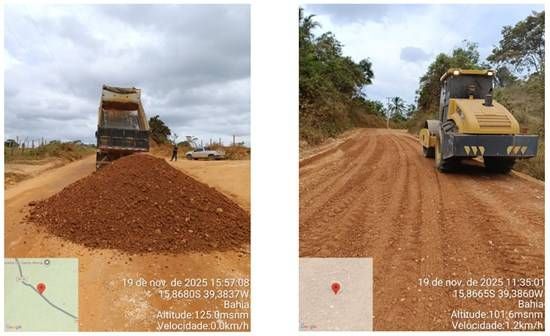
Figure 1 & 2. Road construction underway along BA-982 SME District
To view an enhanced version of this graphic, please visit:
https://images.newsfilecorp.com/files/4082/278205_b48ee00534e1b922_001full.jpg
The 2026 draft federal budget (PLOA 2026) includes a specific road construction line item, ‘BA-274 (Santa Maria Eterna) – Entr. BA-275(A) (Itapebi)’, under code 1C09 – Construction of road section, within the Ministry of Transport’s investment program, with an allocated amount of R$15 million. This classification indicates that the initiative is financed predominantly with federal fiscal-budget resources (‘recursos próprios’ of the federal treasury). While this BA-274 / BA-275 – Santa Maria Eterna item is not described in public documents as being exclusively or formally dedicated to Homerun’s future solar glass plant, the route directly services the Santa Maria Eterna district and is highly supportive of the Company’s long-term industrial development plans.
EXECUTION OF INFRASTRUCTURE COMMITMENTS UNDER THE MOU
As disclosed on May 13th, 2025 (News here), Homerun is party to a memorandum of understanding (‘MoU’) with CBPM (Bahia’s state geological service and mineral assets company), Bahia state government entities, the Municipality of Belmonte and Bahiagás to advance the development of a silica processing plant and a large-scale solar glass factory in Santa Maria Eterna. Local municipal decrees and coverage of this MoU reference obligations that include land for the industrial site, as well as commitments to improve infrastructure and logistics access to the district, which implicitly encompasses road access to BR-101. This comes after Homerun’s December 15th news release stating the Municipality of Belmonte’s commitment and allocation of funding to the paving of approximately 5km of road connecting Santa Maria Eterna to BR-101, the main federal highway in the region.
The commencement of construction on the BA-274 / BA-982 connection is an important early demonstration of this institutional support. The works now underway materially improve all-weather access between Santa Maria Eterna and BR-101, reduce future haulage risk and logistics costs for potential silica and solar glass operations, and visibly anchor the region’s transition toward an industrial hub based on high-purity silica and advanced glass manufacturing.
About Homerun (www.homerunresources.com / www.homerunenergy.com)
Homerun Resources Inc. (TSXV: HMR,OTC:HMRFF) is building the silica-powered backbone of the energy transition across four focused verticals: Silica, Solar, Energy Storage, and Energy Solutions. Anchored by a unique high-purity low-iron silica resource in Bahia, Brazil, Homerun transforms raw silica into essential products and technologies that accelerate clean power adoption and deliver durable shareholder value.
Silica: Secure supply and processing of high-purity low-iron silica for mission-critical applications, enabling premium solar glass and advanced energy materials.
Solar: Development of Latin America’s first dedicated 1,000 tonne per day high-efficiency solar glass plant and the commercialization of antimony-free solar glass designed for next-generation photovoltaic performance.
Energy Storage: Advancement of long-duration, silica-based thermal storage systems and related technologies to decarbonize industrial heat and unlock grid flexibility.
Energy Solutions: AI-enabled energy management, control systems, and turnkey electrification solutions that reduce costs and optimize renewable generation for commercial and industrial customers.
With disciplined execution, strategic partnerships, and an unwavering commitment to best-in-class ESG practices, Homerun is focused on converting milestones into markets-creating a scalable, vertically integrated platform for clean energy manufacturing in the Americas.
On behalf of the Board of Directors of
Homerun Resources Inc.
‘Brian Leeners’
Brian Leeners, CEO & Director
brianleeners@gmail.com / +1 604-862-4184 (WhatsApp)
Tyler Muir, Investor Relations
info@homerunresources.com / +1 306-690-8886 (WhatsApp)
FOR THE ADEQUACY OR ACCURACY OF THIS RELEASE
The information contained herein contains ‘forward-looking statements’ within the meaning of applicable securities legislation. Forward-looking statements relate to information that is based on assumptions of management, forecasts of future results, and estimates of amounts not yet determinable. Any statements that express predictions, expectations, beliefs, plans, projections, objectives, assumptions or future events or performance are not statements of historical fact and may be ‘forward-looking statements’.
Neither the TSX Venture Exchange nor its Regulation Services Provider (as that term is defined in policies of the TSX Venture Exchange) accepts responsibility for the adequacy or accuracy of this release.

To view the source version of this press release, please visit https://www.newsfilecorp.com/release/278205

News Provided by Newsfile via QuoteMedia


China’s CMOC Group (OTC Pink:CMCLF) has agreed to buy a portfolio of gold assets in Brazil from Canada’s Equinox Gold (TSX:EQX,NYSEAMERICAN:EQX) for US$1.015 billion,
CMOC said Monday (December 15) that it will acquire 100 percent of Equinox Gold’s Brazilian operations, comprising the Aurizona mine in Maranhão, the RDM mine in Minas Gerais, and the Bahia complex, which includes the Fazenda and Santa Luz mines.
The acquired assets collectively host total gold resources of 5.013 million ounces and reserves of 3.873 million ounces, according to CMOC. Gold production from the Brazilian operations totaled 247,300 ounces in 2024, in line with Equinox’s guidance of 250,000 to 270,000 ounces of output this year.
The consideration includes a US$900 million upfront cash payment at closing and a contingent payment of up to US$115 million tied to production volumes during the first year after closing.
“The transaction is an important step that showcases our conviction in gold and delivers on our strategy of pillaring the portfolio on copper and gold,” said Liu Jianfeng, chairman and chief investment officer of CMOC, in the official press release.
CMOC said the deal will add around eight tons of annual gold production to its portfolio. The company expects its gold output to potentially exceed 20 tons a year once its Odin gold mine in Ecuador enters operation, positioning the group for further long-term growth in the metal.
For Equinox Gold, the sale also marks a change in operational strategy. The Vancouver-based said divesting its Brazilian assets will simplify its portfolio and sharpen its focus on North America.
Chief executive Darren Hall described the move as a turning point for the company, calling the transaction a “pivotal step” toward becoming a pure North American-focused gold producer.
Following the sale, Equinox’s core assets will include the Valentine and Greenstone mines in Canada, both of which entered commercial production within the past 13 months, and the long-running Mesquite mine in California.
Greenstone is expected to produce between 220,000 and 260,000 ounces of gold this year, while Valentine is forecast to deliver 175,000 to 200,000 ounces annually once fully ramped up. The Mesquite mine is also projected to contribute around 95,000 ounces in 2025.
As production at its Canadian operations ramps up to full capacity, Equinox said it anticipates annual gold output in the range of 700,000 to 800,000 ounces next year and plans to release detailed production and cost guidance in early 2026.
The transaction is expected to close in the first quarter of 2026, subject to regulatory approvals and conditions.
Securities Disclosure: I, Giann Liguid, hold no direct investment interest in any company mentioned in this article.
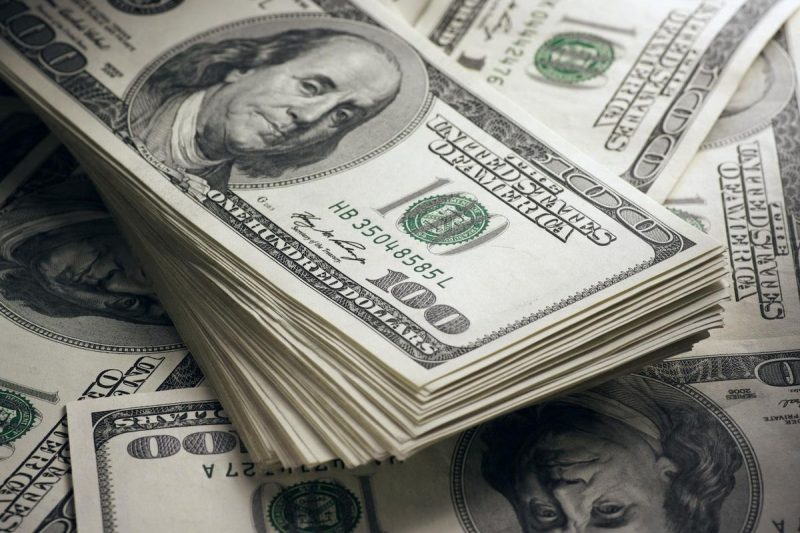
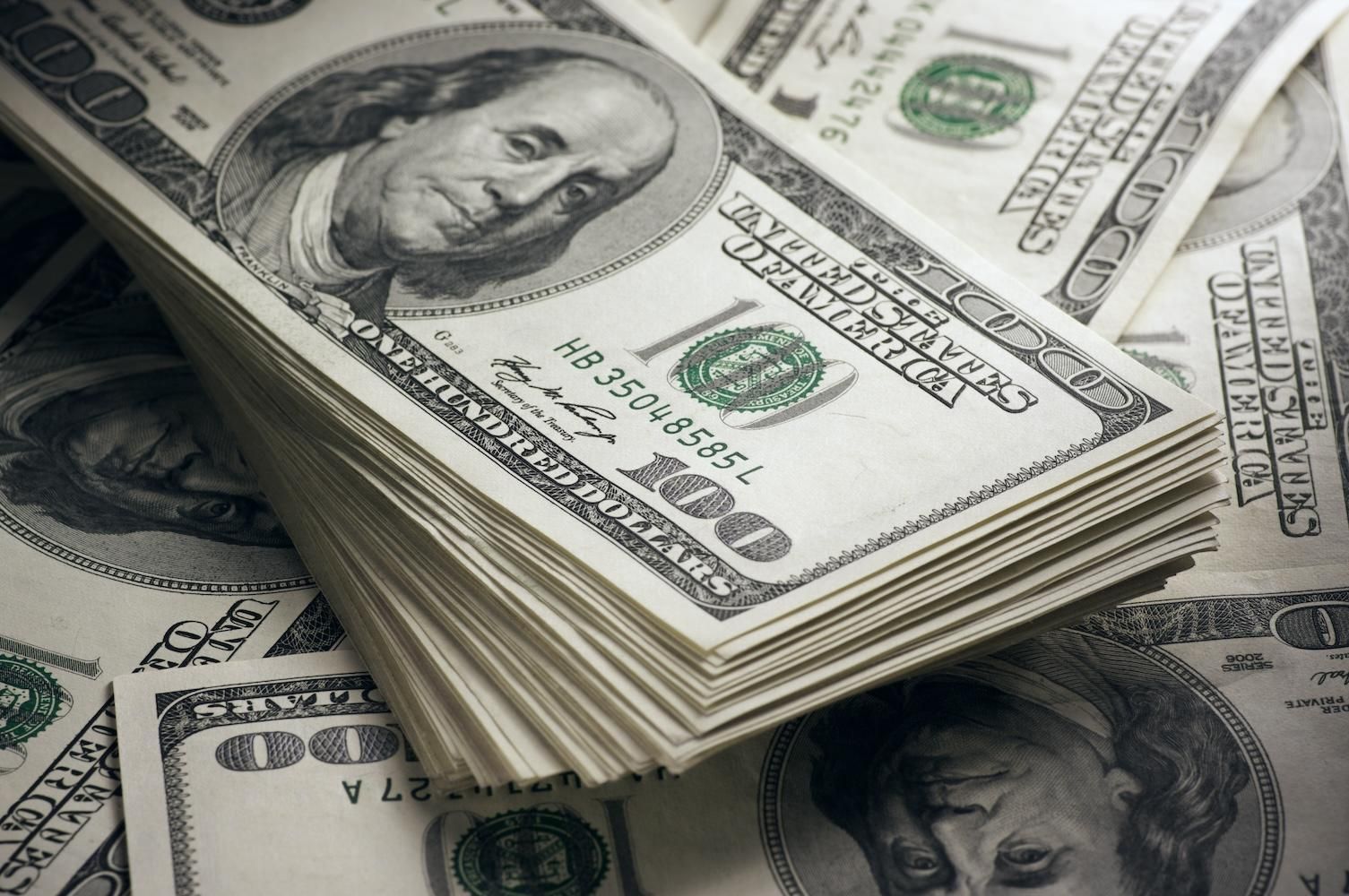
Korea Zinc (KRX:010130) plans to invest US$7.4 billion to build a zinc smelter and critical minerals processing facility in the US, marking the first new US-based zinc smelter since the 1970s.
The world’s largest zinc smelter said the facility will be built in Tennessee and will produce non-ferrous metals such as zinc, lead and copper, precious metals including gold and silver, and strategic minerals such as antimony, germanium and gallium.
Washington continues to step up efforts to secure domestic supply chains for critical minerals and reduce reliance on China, which dominates global production of several materials essential to semiconductors, telecommunications equipment and military technology.
To finance the project, Korea Zinc said it will raise US$1.9 billion by issuing new shares to a joint venture controlled by the US government and unnamed U.S.-based strategic investors.
That joint venture would hold around 10 percent of Korea Zinc, with the US Department of War owning a 40 percent stake in the venture and Korea Zinc holding less than 10 percent.
The company said it will secure the remaining US$5.5 billion through about US$4.7 billion in loans from the US government and financial institutions, as well as US$210 million in subsidies from the US Commerce Department under the CHIPS and Science Act.
Shares of Korea Zinc surged as much as 26 percent in early trading following the announcement before paring gains to close up 4.9 percent.
The company maintained that the US smelter is a direct response to the expansion of global supply chain risks and the increasing demand for non-ferrous metals and strategic minerals.
China currently dominates the global supply of minerals such as antimony and germanium. Beijing banned exports of those minerals to the United States in December 2024 following Washington’s crackdown on China’s chip sector, although the ban has been suspended since November.
The scale and structure of the US project, however, have sparked strong opposition from Korea Zinc’s largest shareholders.
Young Poong Group and private equity firm MBK Partners, which together hold nearly 50 percent of Korea Zinc, said they will seek a court injunction to block the planned share issuance.
The two have been locked in a prolonged dispute with Chairman Choi Yun-beom after launching a tender offer in September 2024 aimed at challenging his management control.
Young Poong said the decision to approve a third-party allotment of new shares was pushed through without proper consultation and was designed to entrench existing management.
“As Korea Zinc’s largest shareholder, directors appointed by Young Poong and MBK Partners express deep regret that they were entirely excluded from any meaningful prior briefing or discussion on a matter of such far-reaching importance to the company’s future,” a Young Poong official said as reported by the Korea Times.
“This represents a severe breakdown in corporate governance and a serious procedural violation.”
The alliance warned that the move could dilute shareholders and undermine the company’s financial soundness, stating that it will “promptly seek a court injunction to halt the issuance of new shares, in order to safeguard Korea Zinc’s long-term viability and shareholder interests.”
Young Poong also questioned claims that the U.S. government is directly investing in the smelter itself.
“In a normal commercial structure, an investor supporting the construction of a new smelter would invest directly in the project entity,” the official added, arguing that the proposed structure instead grants voting rights to a foreign-backed entity at the parent-company level.
The group further warned that replicating Korea Zinc’s integrated smelting process in the United States could weaken South Korea’s domestic smelting industry and increase the risk of transferring proprietary expertise overseas.
Korea Zinc has not yet publicly addressed the governance criticisms. Despite the opposition, commercial operations are expected to begin in phases starting in 2029.
Securities Disclosure: I, Giann Liguid, hold no direct investment interest in any company mentioned in this article.
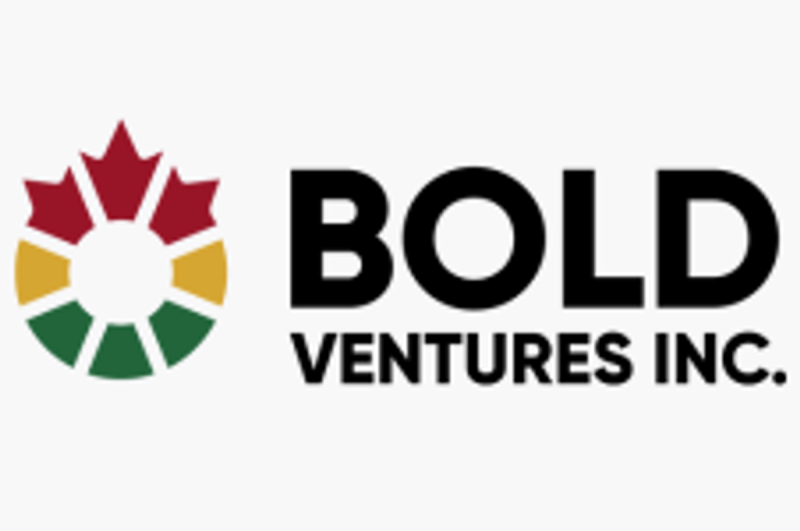
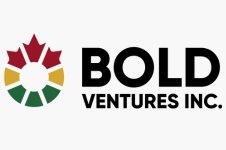
Bold Ventures Inc. (TSXV: BOL,OTC:BVLDF) (the ‘Company’ or ‘Bold’) is pleased to announce a non-brokered private placement offering of up to 6,000,000 working capital units (the ‘WC Units’) of the Company at a price of $0.08 per WC unit for up to $480,000 and up to 6,500,000 Flow Through units (the ‘FT Units’) at a price of $0.09 per FT Unit for up to $585,000 both of which constitute the ‘Offering.’
The Offering
Each WC Unit comprises one (1) common share of the Company priced at $0.08 and one full common share purchase warrant (a ‘WC Warrant‘) entitling the holder to acquire one (1) common share at a price of $0.12 until three years (36 months) following the closing of the Offering. The proceeds from the WC Units will be used for general working capital, property maintenance, exploration and expenses of the offering.
Each FT Unit comprises one common share of the Company priced at $0.09 and one half (1/2) of a common share purchase warrant. One full common share purchase warrant (a ‘FT Warrant‘) and $0.12 will acquire an additional common share until twenty-four (24) months following the closing of the Offering. The proceeds from the sale of the FT Units will be used for exploration work that qualifies for Canadian Exploration Expenses (CEE).
In connection with the Offering, the Company may pay a finder’s fee to qualified finders in consideration for their assistance with the Offering. The finder’s fees may be payable in cash and/or securities of Bold at the discretion of the Company and in accordance with the rules of the TSX Venture Exchange.
All securities to be issued pursuant to the Offering are subject to a statutory four (4) month and one (1) day hold period and regulatory approval.
Bold Ventures management believes our suite of Battery, Critical and Precious Metals exploration projects are an ideal combination of exploration potential meeting future demand. Our target commodities are comprised of: Copper (Cu), Nickel (Ni), Lead (Pb), Zinc (Zn), Gold (Au), Silver (Ag), Platinum (Pt), Palladium (Pd) and Chromium (Cr). The Critical Metals list and a description of the Provincial and Federal electrification plans are posted on the Bold website here.
About Bold Ventures Inc.
The Company explores for Precious, Battery and Critical Metals in Canada. Bold is exploring properties located in active gold and battery metals camps in the Thunder Bay and Wawa regions of Ontario. Bold also holds significant assets located within and around the emerging multi-metals district dubbed the Ring of Fire region, located in the James Bay Lowlands of Northern Ontario.
For additional information about Bold Ventures and our projects please visit boldventuresinc.com or contact us at 416-864-1456 or email us at info@boldventuresinc.com.
| ‘Bruce A MacLachlan’ Bruce MacLachlan President and COO Direct line: (705) 266-0847 Email: bruce@boldventuresinc.com |
‘David B Graham’ David Graham CEO |
Neither TSX Venture Exchange nor its Regulation Services Provider (as that term is defined in the policies of the TSX Venture Exchange) accepts responsibility for the adequacy or accuracy of this release.
Cautionary Note Regarding Forward-Looking Statements: This Press Release contains forward-looking statements that involve risks and uncertainties, which may cause actual results to differ materially from the statements made. When used in this document, the words ‘may’, ‘would’, ‘could’, ‘will’, ‘intend’, ‘plan’, ‘anticipate’, ‘believe’, ‘estimate’, ‘expect’ and similar expressions are intended to identify forward-looking statements. Such statements reflect our current views with respect to future events and are subject to such risks and uncertainties. Many factors could cause our actual results to differ materially from the statements made, including those factors discussed in filings made by us with the Canadian securities regulatory authorities. Should one or more of these risks and uncertainties, such actual results of current exploration programs, the general risks associated with the mining industry, the price of gold and other metals, currency and interest rate fluctuations, increased competition and general economic and market factors, occur or should assumptions underlying the forward-looking statements prove incorrect, actual results may vary materially from those described herein as intended, planned, anticipated, or expected. We do not intend and do not assume any obligation to update these forward-looking statements, except as required by law. Shareholders are cautioned not to put undue reliance on such forward-looking statements.
NOT FOR DISTRIBUTION TO U.S. NEWSWIRE SERVICES OR FOR DISSEMINATION
IN THE UNITED STATES

To view the source version of this press release, please visit https://www.newsfilecorp.com/release/278173

News Provided by Newsfile via QuoteMedia